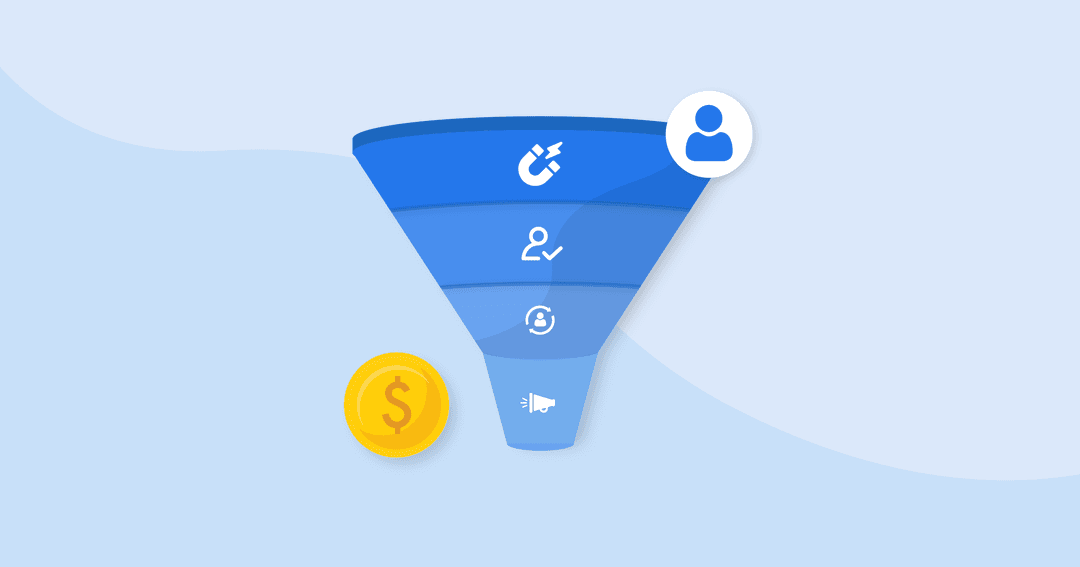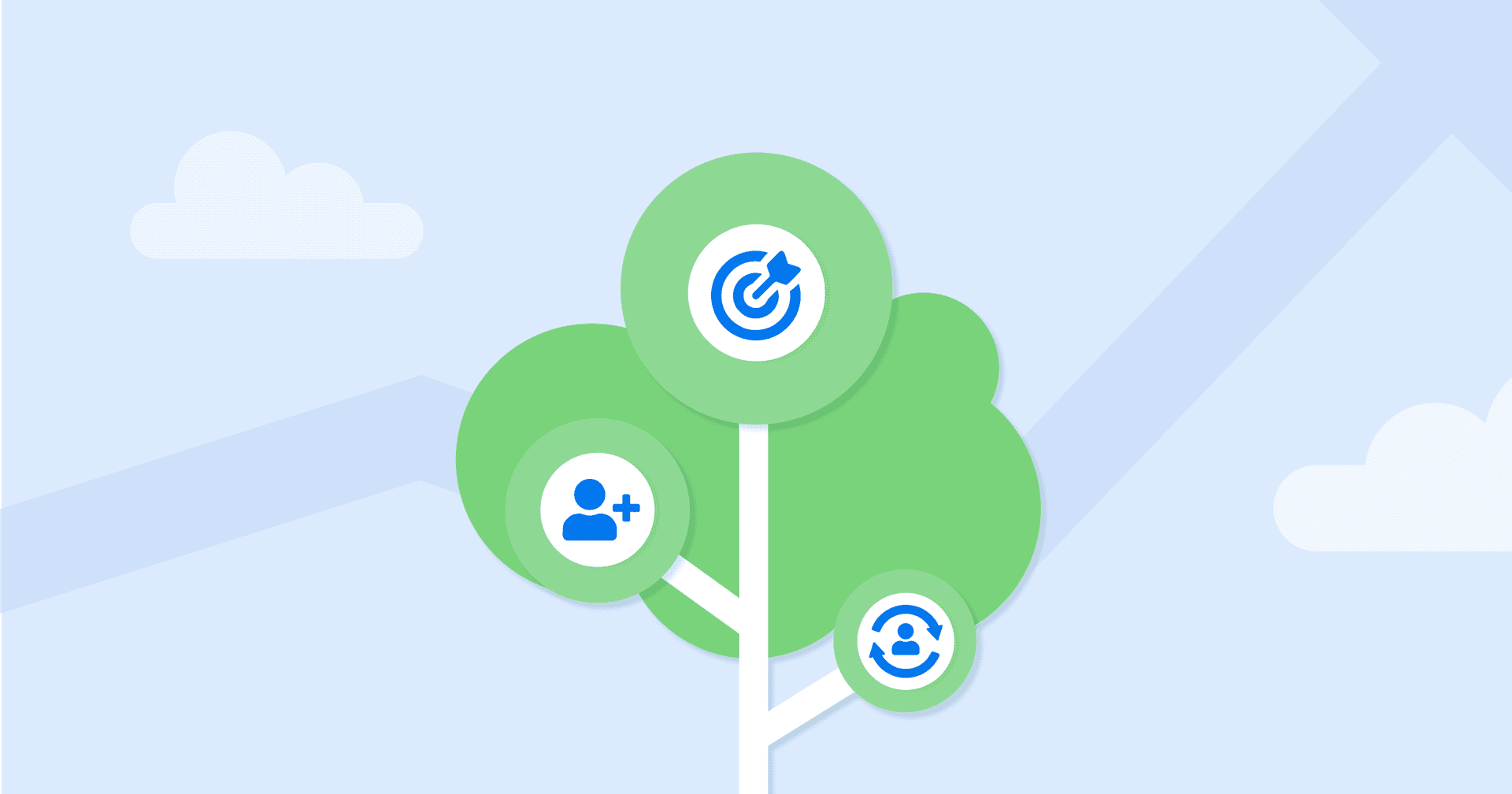Table of Contents
QUICK SUMMARY:
This article explores the pros and cons of inbound vs outbound marketing, offering a framework to help you choose the best marketing strategy for each client, plus best practices for inbound and outbound marketing success.
Guiding your clients in the right direction is a cornerstone of your agency’s success. But in the sea of endless marketing strategies, it’s easy to get caught up trying to do too much all at once!
How do you confidently recommend the best approach to your clients—whether an inbound strategy that builds trust, an outbound strategy that generates visibility for a broader audience, or a balance of both?
In this article, we’ll review the pros and cons of inbound and outbound marketing and share a step-by-step framework for choosing the best approach for each client. Use these insights to make informed strategy recommendations that maximize results and showcase your agency’s value.
Unpacking Inbound Marketing: The Pull Approach
Inbound marketing (or pull marketing) attracts target audiences with relevant, value-driven content that guides them through the customer journey. Instead of outwardly pushing for customer attention or interrupting their experience, an inbound marketing strategy brings customers through your client’s door more organically and willingly.
Inbound Marketing Examples
Inbound marketing isn’t just about attracting attention—it’s about earning it. These proven inbound marketing efforts are essential for building engagement and trust:
Long-form blog posts
Search engines
Informative videos (e.g., an educational YouTube series about a particular issue)
Live chats or chatbots for customer support
Downloadable guides (e.g., e-books on a specific subject matter)
Email marketing (e.g., drip campaigns for every step of the customer journey)
Social media marketing

Inbound Marketing Benefits
While ambitious sales campaigns drive results, they shouldn’t be your client’s sole focus. Inbound marketing strategies offer a smarter way to generate leads without staying in constant ‘sales’ mode.
Here are some of the benefits of inbound marketing:
1. Customer-Centric Approach: Successful inbound marketing involves understanding your client’s customers on a more granular, personal level. This deep knowledge informs the creation of effective marketing content, designs, calls to action, and website interfaces that resonate with your client’s target audience.
2. Generates Strong Leads: According to UserGuiding, inbound marketing is 10 times more effective at converting leads than outbound strategies. That’s because an inbound methodology openly provides valuable content to potential customers, leaving the decision to take action up to them. By the time prospects decide to take action, they arrive with pre-determined interest and brand awareness.
3. Builds Trust and Authority: Consistently producing high-value inbound marketing content gives your clients the potential to become authoritative leaders in their niche. A strong reputation opens opportunities for collaborative ventures with other industry players, solidifying the client’s traction in the market.
At AgencyAnalytics, our content team publishes several authoritative blog articles weekly, delivering insights tailored to agency leaders. By engaging our readership of more than 30,000 agency leaders, our blog reinforces AgencyAnalytics as a trusted authority in the digital marketing space.

4. Easier to Track: Inbound marketing campaigns are rooted in digital marketing software like Google Analytics, HubSpot, and CRM systems. These tools enable your team to monitor KPIs like traffic sources, conversion rates, and time on site to deliver clear insights on ROI.
5. Cost-Effective: A solid inbound strategy is a gift that keeps on giving! While it’s a long-term solution that requires consistent investment, inbound marketing tactics are relatively cost-effective compared to outbound mediums.
Inbound Marketing Challenges
Inbound marketing holds immense promise for fostering long-term client growth, but it’s not without its complexities. Here’s what you need to consider when deciding if inbound marketing channels are the right fit for your clients:
1. Initial Setup is Resource-Intensive: Inbound marketing demands robust tools, research, and planning. From selecting digital marketing software to creating personas and mapping content to the sales funnel—the upfront investment in time and resources is significant.
2. Requires Content Creation Expertise: Success in inbound marketing relies heavily on high-quality, relevant content. This demands skilled writers, designers, and strategists and a consistent commitment to publishing.
In saturated markets, basic inbound techniques aren’t enough to stand out. Advanced SEO strategies, such as technical optimizations and targeted backlink building, often become necessary, increasing complexity and cost.
3. ROI Takes Time: Inbound marketing is a long game. Inbound efforts like blog posts, SEO, and social media posts often take months—or even years—to build momentum.
Impress clients and save hours with custom, automated reporting.
Join 7,000+ agencies that create reports in under 30 minutes per client using AgencyAnalytics. Get started for free. No credit card required.
Unpacking Outbound Marketing: The Push Approach
Now, let’s talk about outbound marketing (push marketing). This is a more traditional marketing approach that aims to capture the attention of potential customers—whether they’re actively searching for solutions or not. Outbound marketing excels at getting in front of a broader audience, making it an effective strategy for building brand awareness.
Outbound Marketing Examples
Here are some impactful outbound channels to consider for your clients:
In-person events (e.g., seminars, trade shows)
Paid advertising (search ads, billboards, display ads, TV commercials, radio ads)
Social media advertising
Cold outreach (cold calling or cold email marketing)
Digital display advertising
Direct mail campaigns
Event marketing or sponsorships
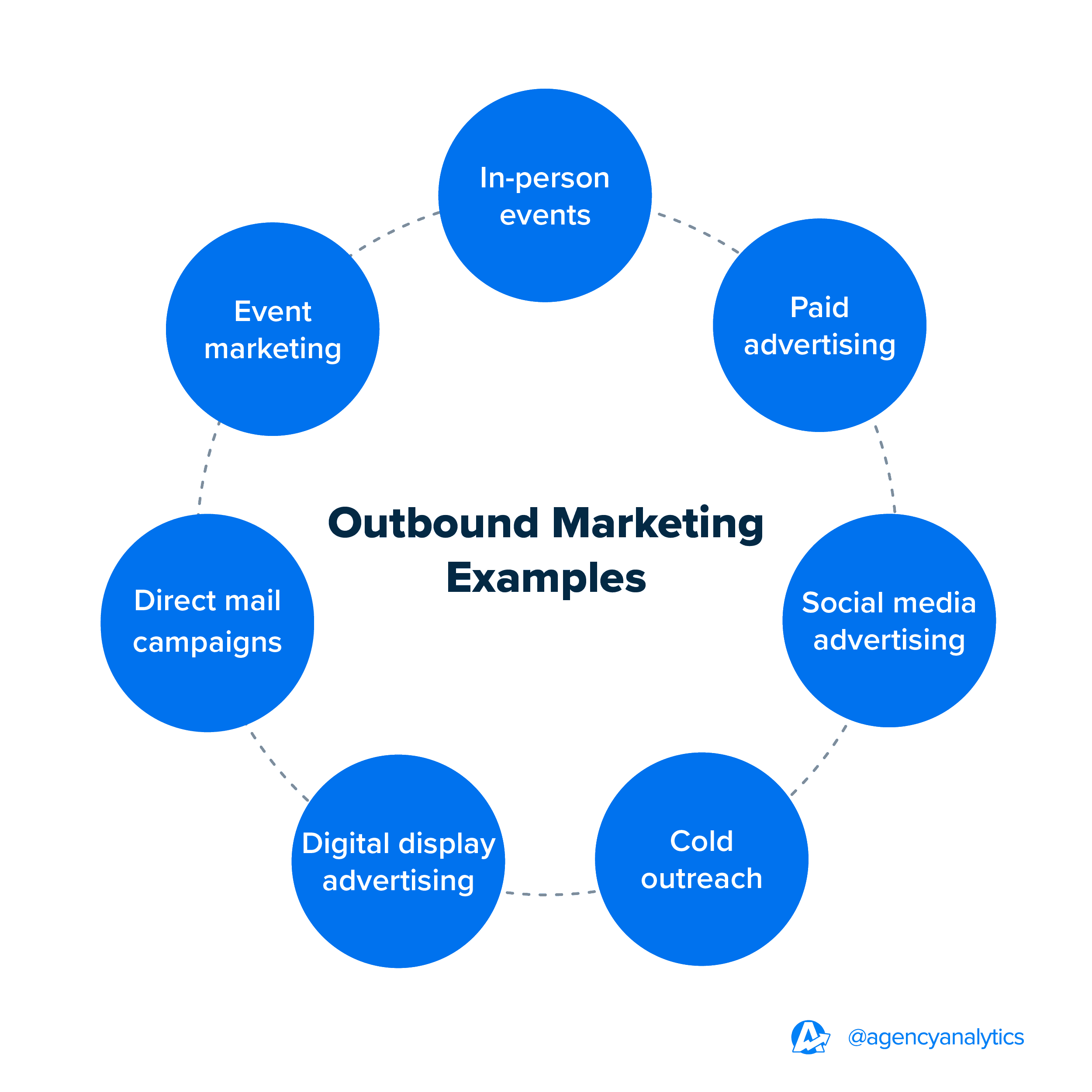
Outbound Marketing Benefits
When your clients need fast, targeted, and scalable results, outbound marketing offers distinct advantages over inbound marketing. Here’s how outbound marketing gives your clients an edge:
1. Immediate Visibility: Outbound marketing tactics like paid ads, direct mail, and TV spots ensure your client’s message is seen immediately. The speed at which campaigns are released makes outbound marketing ideal for product launches or awareness campaigns where timing is critical.
2. Easier to Scale: Scaling outbound campaigns is straightforward—more investment equals a broader reach. By increasing ad spend or expanding to additional channels, your clients quickly amplify their messaging to capture more leads and conversions.
3. Flexible Targeting Options: Outbound targeting capabilities make it versatile for various client needs. For instance, geo-targeted Google Ads allow retail clients to reach local customers, while LinkedIn Ads help B2B clients connect with specific industries or job roles. This flexibility lets you fine-tune campaigns and deliver the right message to the right audience, maximizing your impact.
4. Highly Effective for B2B Lead Generation: Outbound marketing methods such as cold emailing or LinkedIn outreach work exceptionally well in B2B scenarios. These tactics allow your clients to connect directly with decision-makers and generate highly qualified leads.
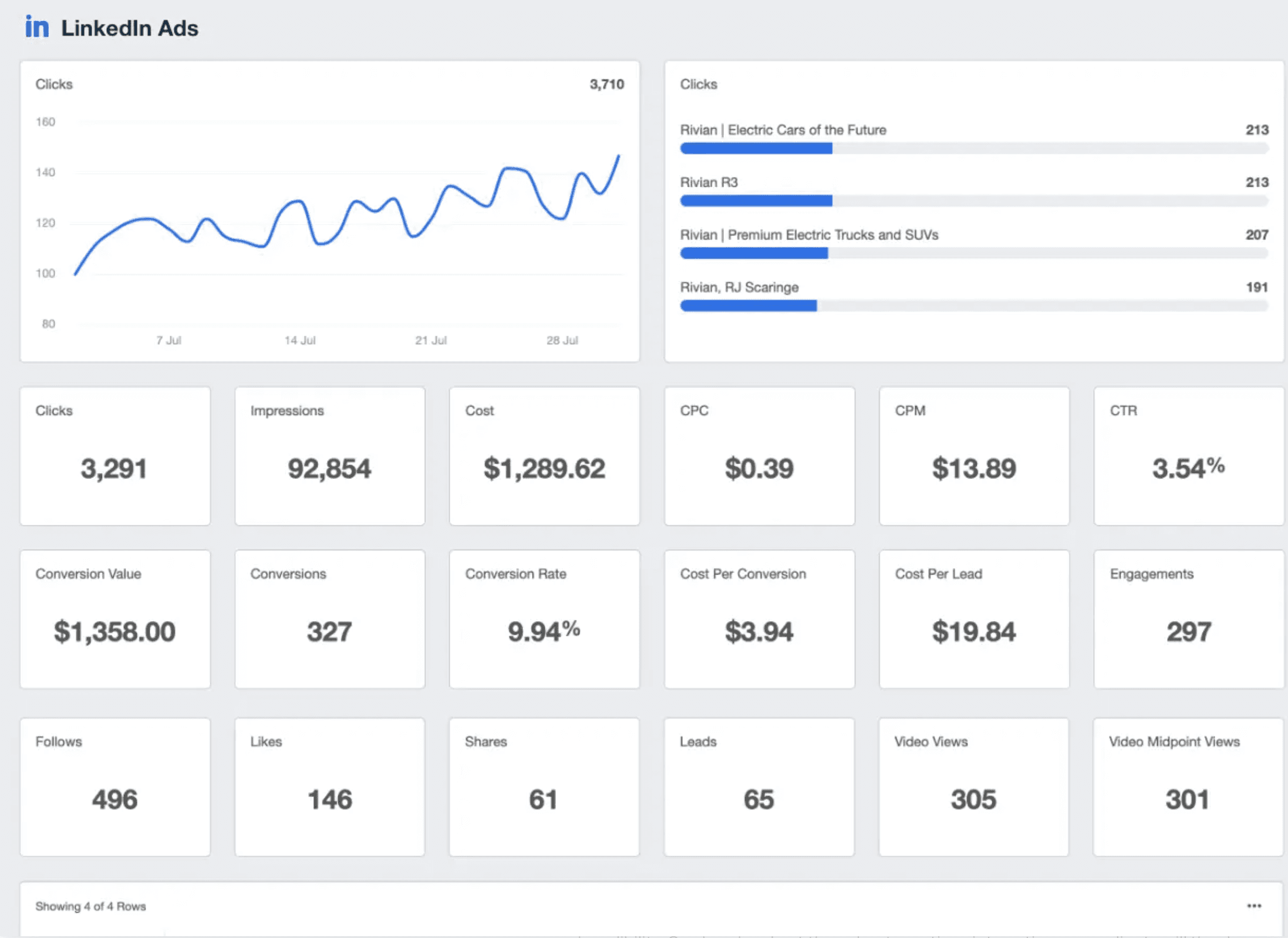
Track all your clients’ LinkedIn Ads metrics in one place with the LinkedIn ads reporting dashboard. Try it free for 14 days.
5. Keeps Brands Top of Mind: Repeated exposure through outbound methods like retargeting ads, TV spots, or print campaigns ensures your client’s brand remains visible and memorable, even among those not ready to convert immediately.
Outbound Marketing Challenges
While outbound marketing campaigns deliver fast results, they come with their own set of obstacles. Here are the key challenges to keep in mind:
1. Higher Upfront Costs: Outbound marketing techniques like TV ads, billboards, and paid online advertising require a significant initial investment. This might limit campaign reach for clients with smaller budgets, reducing overall impact.
2. Perceived as Intrusive or "Spammy": Outbound marketing interrupts potential customers in their daily routines, whether through cold calls, unsolicited emails, or ads. This may lead to a negative brand perception, especially if the messaging feels irrelevant or excessive.
3. Lower Engagement Rates Compared To Inbound Strategies: An outbound strategy reaches a broader audience but often struggles to achieve the same level of engagement. Prospects may skip ads, ignore emails, or tune out messages that don’t immediately resonate with their needs.
4. May Not Foster Long-Term Customer Loyalty: Outbound tactics focus on pushing messages rather than building relationships, so they may not nurture trust or loyalty over time. This transactional approach may limit repeat business or your client’s chances of building brand advocacy.
5. More Difficult to Track: Outbound marketing often lacks the precise tracking capabilities of inbound strategies. While tools like unique URLs or promo codes provide insights into campaign effectiveness, it’s much harder to attribute conversions directly for offline methods like TV ads or billboards. This makes proving ROI to your clients more challenging.
To summarize, inbound marketing focuses on putting the power into the hands of a prospect, allowing them to decide how a brand relationship evolves. In contrast, outbound marketing is about meeting potential customers where they are and creating opportunities for engagement.
Here’s a quick summary of the key differences between inbound vs outbound marketing:
Inbound Marketing | Outbound Marketing |
|---|---|
Adopts a ‘pull’ approach by drawing in viewers, providing high-value content, and driving traffic. | Adopts a proactive ‘push’ approach by directly reaching out to prospects with the intent of getting conversions. |
Focused on digitally-based mediums. | Includes digital display advertising and traditional forms of marketing. |
Targets specific buyer personas and disseminates content for all stages of the marketing funnel. | Sends messaging out to mass audiences to drive brand awareness and conversion. |
Non-intrusive: doesn’t interrupt a prospect’s digital experience. | Interrupts a client during a digital and/or in-person experience. |
Even though inbound and outbound marketing strategies involve distinct approaches, they should work together to create a comprehensive marketing strategy that ensures your client’s success.
Inbound vs Outbound Marketing in Context
Here’s an example of what a comprehensive marketing strategy might look like for a retail client specializing in orthopedic running shoes, combining both inbound and outbound approaches:
A COMPREHENSIVE MARKETING STRATEGY
Inbound Tactics
To help this client attract their ideal audience organically, you could produce a YouTube video series that showcases the benefits and features of the client’s unique product offering. By pairing this with a strategic content plan—including engaging blog posts, downloadable eBooks on choosing the perfect shoe, and even relatable, humorous memes—you strengthen their social media presence and drive traffic to their fully optimized website.
You might also focus on creating content that highlights the pain points and challenges of wearing generically shaped shoes. This approach positions their brand as the go-to solution and helps the messaging resonate with their audience, building trust and encouraging sales.
Outbound Tactics
To complement their inbound tactics, you might implement an aggressive outbound marketing campaign that includes offline tactics such as a billboard placed strategically near their physical store to boost brand awareness.
Your outbound messaging could focus on a clear and compelling call to action, like "Purchase Your Orthopedic Running Shoes Today!" paired with powerful visuals, such as testimonials or images of happy customers. By taking a direct approach, you help their brand stay top of mind, drive traffic to their store, and convert interest into purchases.
A Framework for Choosing Inbound vs Outbound Marketing
After weighing the pros and cons of inbound vs outbound marketing, how do you determine the right strategy—or balance—for your clients? Here’s a step-by-step framework for choosing the most appropriate marketing strategy:
1. Identify The Client’s Specific Business Goals
Engaging in detailed conversations about client goals ensures your chosen strategy aligns with what matters most to your client. If the client’s primary focus is long-term brand awareness, trust-building, and sustainable lead generation, inbound marketing strategies may be the better fit. Outbound marketing strategies might deliver quicker results for short-term campaigns or immediate sales targets.
Use your client discovery sessions to discuss your client’s specific business goals in-depth. Better yet, use a client onboarding questionnaire to gather complete details and official documentation.
It’s also important to dig deeper into their goals. Ask whether they prioritize lead volume or lead quality. Clients seeking to generate a high volume of leads quickly might benefit more from outbound tactics like targeted advertising or cold outreach. If the focus is on high-quality, engaged leads that convert over time, inbound strategies are the better choice.
Our client onboarding questionnaire collects all the essential info you'd expect to have on hand before speaking with them. In addition to the basics, we always like to get a feel for the bigger goals and ambitions that have brought about the discovery session. At this stage in the journey, we are less concerned with the marketing numbers and more concerned with the big picture—what does the client want to achieve, and most importantly, why?
James Londesborough, Owner / Managing Director, Ignite Marketing
2. Research Industry Best Practices
Follow best practices for the client’s specific industry. Is the client’s industry more suited to organic relationships or direct outreach? Industries that thrive on trust and relationships—such as consulting or wellness—often see greater success with inbound marketing, which nurtures connections over time.
In contrast, industries that depend on transactional sales or quick decision-making, like retail or local service providers, may perform better with outbound marketing strategies that generate immediate interest and action.
Agency Tip: Subscribe to relevant industry blogs, attend webinars, or network at trade events to stay updated on popular marketing trends and tools for each client’s sector. For instance, a SaaS client may value insights on the latest ABM (Account-Based Marketing) techniques, while a retail client may need guidance on leveraging programmatic ads for seasonal campaigns.
Review competitors’ inbound and outbound marketing strategies to identify what’s working in similar industries. Look at their website content, social media presence, and advertising tactics to spot patterns or opportunities for your client to adopt or improve on.
3. Confirm Budget and Determine Resource Availability
A client’s budget, time, and expertise significantly influence which marketing strategies are most feasible. Help clients prioritize spending based on their goals. For a client with limited funds, suggest allocating resources to inbound strategies like optimizing their website for SEO or building a backlog of evergreen blog content. For clients with robust budgets, we recommend allocating a portion to high-impact outbound campaigns, such as PPC ads or event sponsorships, for immediate visibility.
Next, consider the resources required to execute your suggested strategy effectively. Suppose your client lacks content creation resources for inbound marketing, or your agency’s capacity is stretched thin with other priorities. In that case, a more focused outbound strategy with paid campaigns may be the more practical choice.
4. Analyze The Target Audience’s Behavior
Understanding the target audience’s preferences is essential to choosing the right strategy. For example, in the tech industry, decision-makers often research extensively online before making purchases, making inbound strategies like whitepapers, educational blogs, and webinars highly effective.
On the other hand, for a local retail client targeting busy parents, outbound methods such as email marketing campaigns or direct mail ads may be more impactful, as they provide immediate, straightforward messaging tailored to their fast-paced lives. Matching your approach to how the audience consumes information is vital to maximizing engagement.
Using a third-party tool like AgencyAnalytics will allow your agency to identify audience behavior trends across multiple platforms, including Google Analytics, Facebook, LinkedIn, Mailchimp, and more. Analyze bounce rates, time on page, and ad click-through rates to refine your strategy.
From there, work with your client to create detailed audience personas. These personas will act as a roadmap, helping you tailor messaging, select the right platforms, and prioritize tactics that align with the audience’s unique needs and preferences.
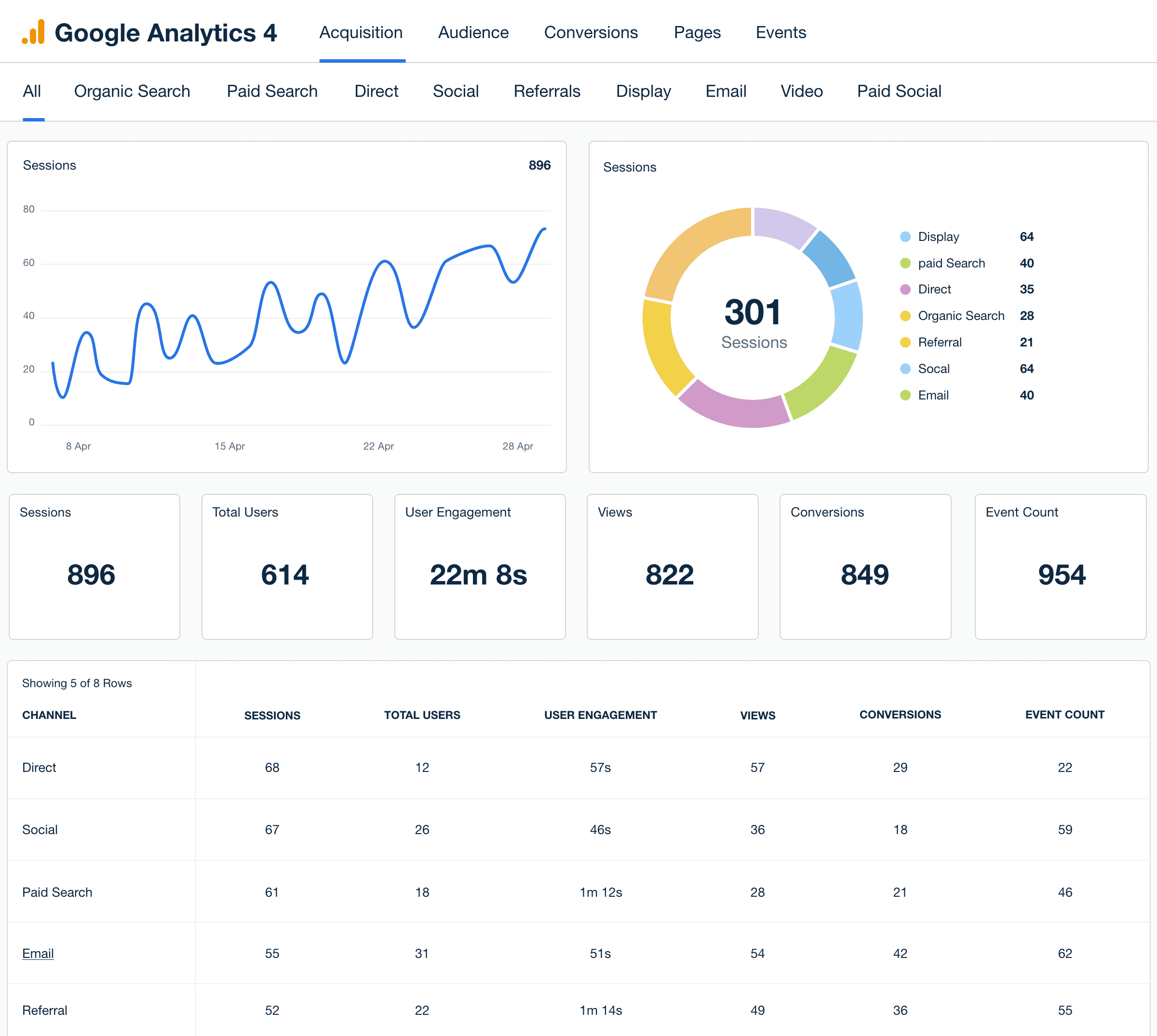
Stop juggling multiple platforms! Track audience behavior and other key metrics effortlessly with AgencyAnalytics’ Google Analytics integration—all from one intuitive dashboard. Try it free for 14 days.
5. Test and Iterate
Launching smaller-scale campaigns for both inbound and outbound strategies will help you determine which strategies perform best for your client before committing significant resources. For example, test a series of blog posts paired with SEO optimization alongside a set of targeted ads. Analyze key metrics like engagement rate, conversion rate, and cost per acquisition to identify the most effective approach.
You might also want to A/B test different messaging styles. Experiment with different tones, formats, and calls to action for inbound and outbound campaigns. For example, test an educational blog post against a direct, offer-focused email to see which generates more leads or clicks.
Adjust your strategy based on the data. If inbound efforts like blog posts drive higher engagement but outbound ads convert more effectively, consider a hybrid approach incorporating both. At the end of the day, outbound and inbound marketing work best when both strategies are aligned.
Proving Campaign ROI
Executing successful inbound and outbound marketing campaigns is only part of the equation—the next step is demonstrating their effectiveness to your client.
Measuring the ROI of your inbound and outbound marketing efforts starts with tracking the right metrics. Here’s a list of the essential metrics that tell the full story of campaign success:
Inbound Marketing Strategy Metrics | Outbound Marketing Strategy Metrics | Metrics to Track for Both Strategies |
|---|---|---|
Views Subscriber Growth Acquired, relevant backlinks Open rate Lead quality Traffic to lead ratio Lead-to-customer ratio
| Impressions and Reach Lead Quality Call Volume and Inquiries | Customer Acquisition Cost (CAC) Engagement and Brand Awareness |
For inbound strategies, use tools like HubSpot or Google Analytics to measure KPIs such as lead quality, time-on-page, and organic traffic growth. For outbound campaigns, platforms like LinkedIn Ads or Facebook Ads Manager help you track impressions, cost per lead, and ROAS.
To simplify the process, consolidate data from all platforms into a single client reporting hub like AgencyAnalytics. By centralizing metrics across channels, you create clear, cohesive client reports that are easy to understand and share. This transparency not only saves time but also allows you to:
Demonstrate Campaign ROI Effectively: Present all relevant data in one place, showing clients exactly how your efforts drive results.
Build Trust With Transparent Reporting: Clients see the direct impact of your strategies immediately, reinforcing your agency’s credibility.
Streamline Workflows: Eliminate the need to switch between multiple tools, saving hours of manual marketing data aggregation and client reporting.
With a platform like AgencyAnalytics, you position your agency as a partner that delivers results and provides unmatched clarity in tracking and presenting them.
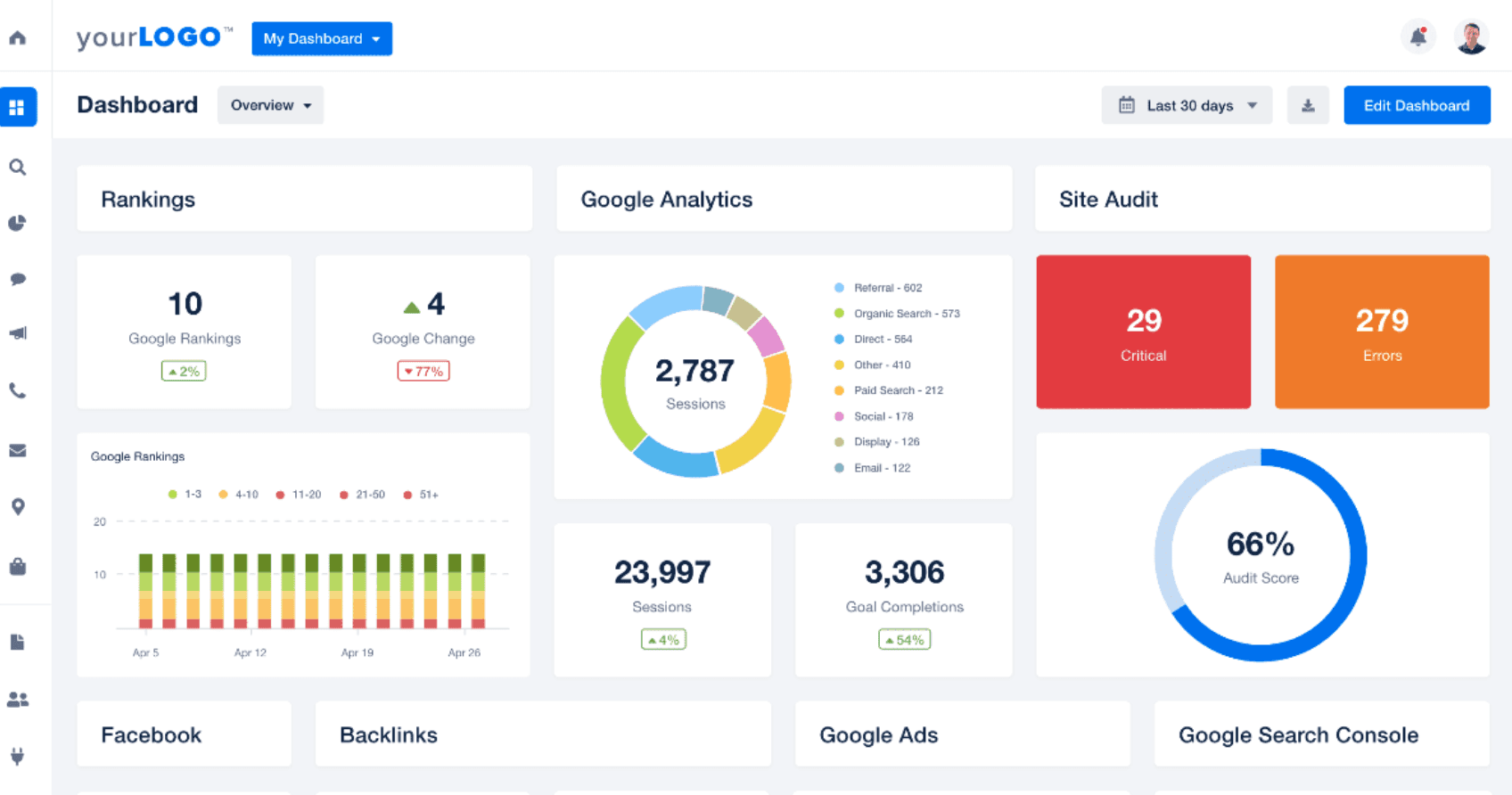
Use the fully customizable dashboards and automated reports from AgencyAnalytics to easily track your clients’ inbound and outbound marketing metrics. Try AgencyAnalytics free for 14 days.
The Takeaway
Getting your clients noticed requires more than choosing between inbound and outbound marketing—it’s about crafting a strategic mix that aligns with their unique goals, resources, and audience behaviors. By tailoring your recommendations thoughtfully, you’re able to confidently propose strategies that deliver results.
A well-informed, customized approach ensures success and strengthens your agency’s reputation as a trusted partner. Pair this with modern client reporting that provides clear, actionable insights, and you’ll build trust, enhance collaboration, and showcase the measurable value your agency brings to every campaign.

Written by
Faryal Khan is a multidisciplinary creative with 10+ years of experience in marketing and communications. Drawing on her background in statistics and psychology, she fuses storytelling with data to craft narratives that both inform and inspire.
Read more posts by Faryal KhanSee how 7,000+ marketing agencies help clients win
Free 14-day trial. No credit card required.



